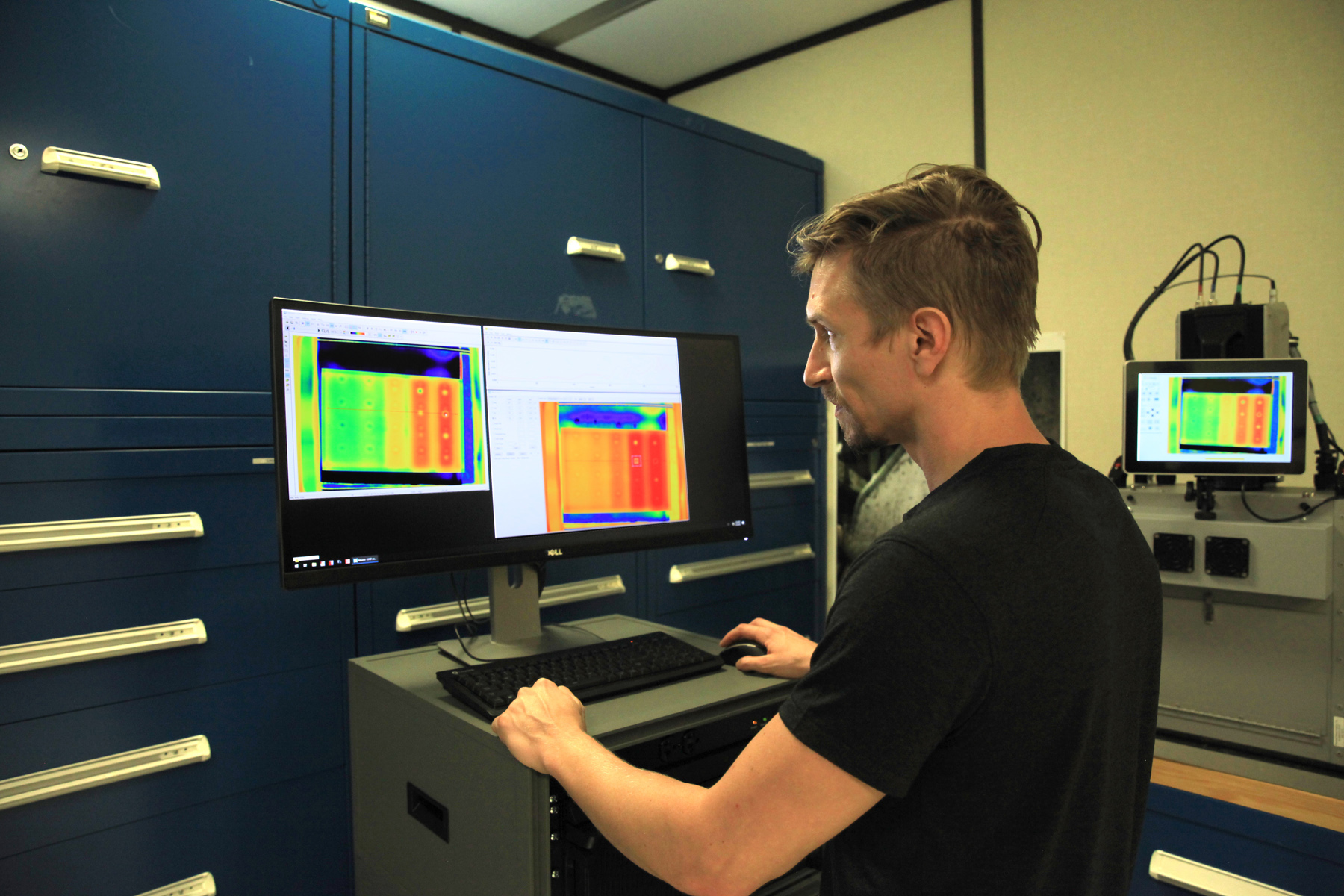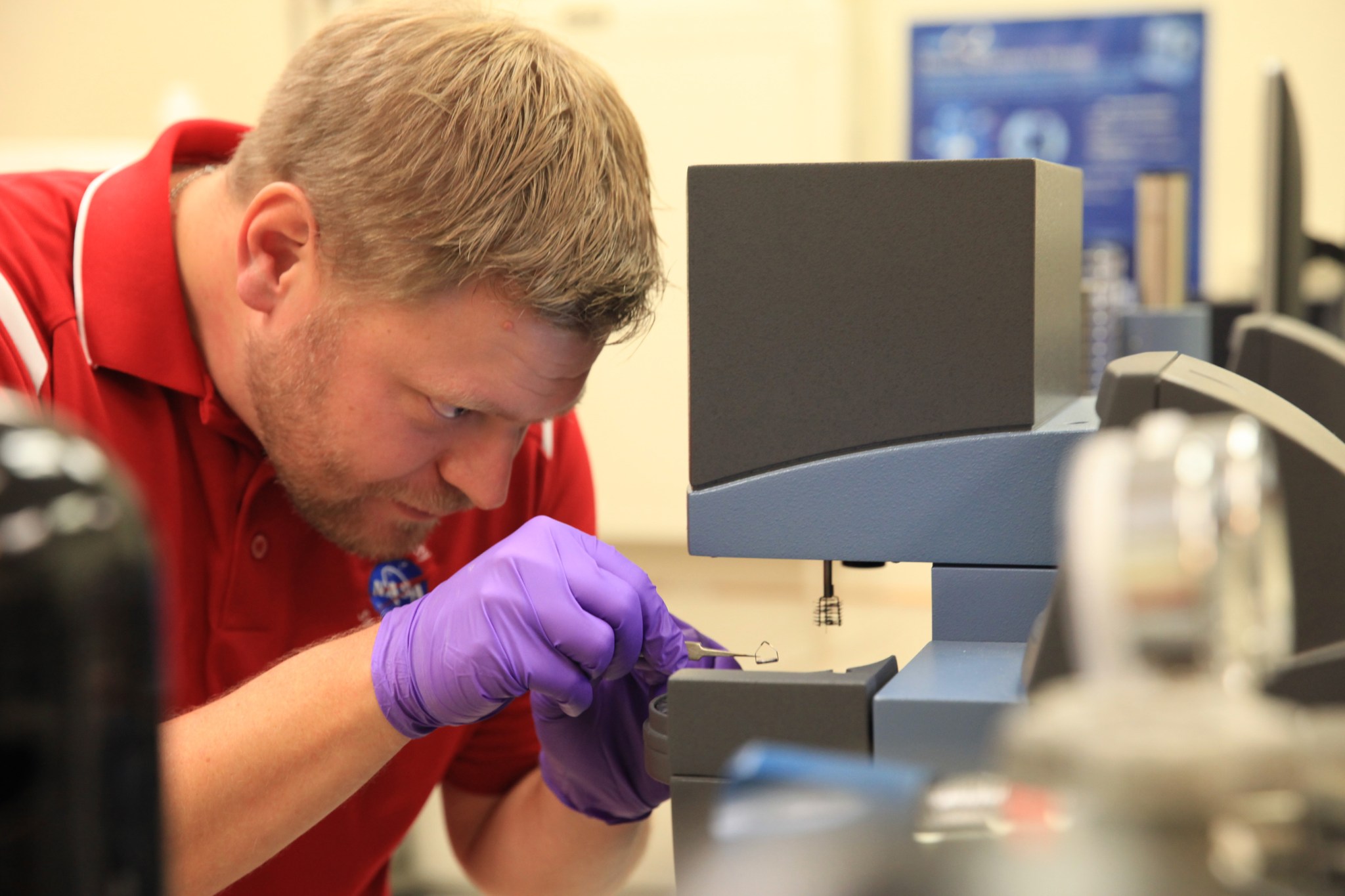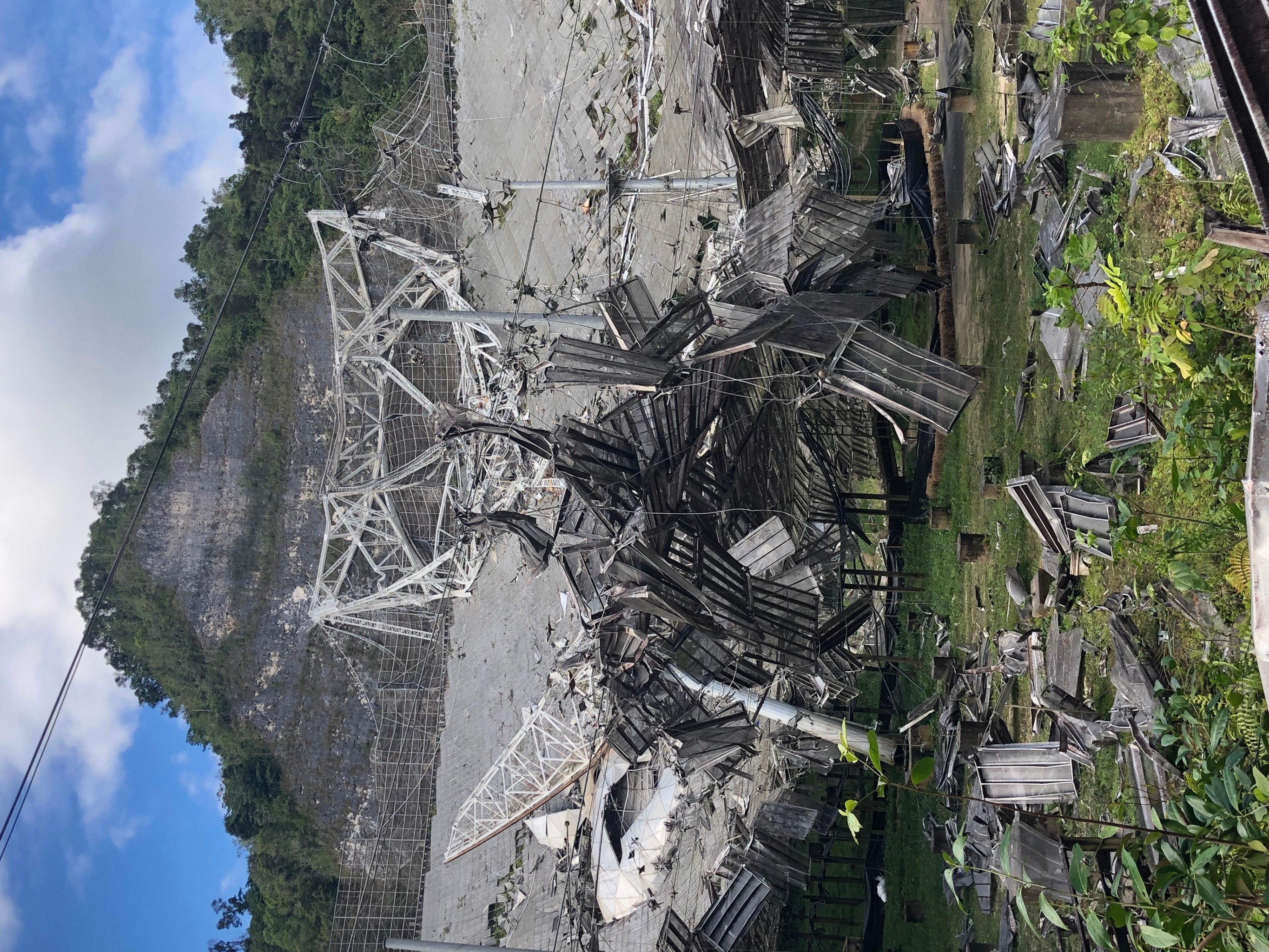By Linda Herridge
NASA’s John F. Kennedy Space Center
To build an Artemis Base Camp on the Moon, astronauts will need materials that won’t fail under extreme conditions. An engineering team at NASA’s Kennedy Space Center in Florida helps develop solutions to this and other problems by studying things that don’t work.
“Researchers here have been working with Lunar regolith simulant to find ways to build structures on the Moon – we call them Moon bricks,” said Jeff Sampson, acting chief of the Materials Laboratories Branch. “We have tested the mechanical properties of these prototype building materials that will be available and could one day be fabricated on the Moon.”
Failure analysis is a normal day at the office for engineers in the branch. They study failed parts and mechanisms using state-of-the-art laboratory equipment to help prevent failures from recurring, not just in structures, but in many kinds of space hardware.
“We test material properties of each component to verify they meet design requirements for space vehicles and ground support equipment,” said Sampson. “We also analyze failure surfaces on a microscopic level to understand how the component failed.”
Recently, the team helped analyze the failed support cable in a large socket end fitting from the Arecibo Observatory in Puerto Rico. The observatory, a facility of the National Science Foundation, is operated under cooperative agreement by the University of Central Florida and in alliance with Universidad Ana G. Mendez, and Yang Enterprises Inc.
The radio telescope, which reigned for more than 50 years as one of the largest single dish radio telescopes in the world, sustained structural damage from the failure of cables suspending the instrument platform before finally collapsing in December 2020.
To determine the most probable cause of the cable failure, the Kennedy engineers worked as an integrated failure analysis team with the NASA Engineering Safety Center (NESC) at the agency’s Langley Research Center in Hampton, Virginia, and Marshall Space flight Center in Huntsville, Alabama, as well as The Aerospace Corporation and Wiss, Janney, Elstner Associates Inc., an engineering consulting firm.
Nathan Trepal and Jerry Buhrow, both materials engineers, worked with the engineering firm to acquire the failed cables and socket. Kennedy’s Prototype Development Lab technicians helped to cut the huge 500-pound socket apart so the external and internal parts could be scanned into 3D models.
“We had to be careful how we processed the cable and socket for analysis,” Trepal said. “The cable included 127 wires, and we found that many of the wires failed in different ways.”
The team used the lab’s load frames to pull individual wires to failure. Buhrow then worked to remove the zinc coating from the wires using polishers, grinders, and hydrochloric acid etching to allow for a material analysis.
“It seemed like a novel approach to expose wires from the zinc coating,” Trepal said. “It worked, and we were able to see all the wires as they were when they failed, without disturbing their final positions. That was instrumental in determining the main cause of the failure.”
Using a scanning electron microscope and stereo microscopy – a microscope with separate eye pieces – the team could view the morphology, or 3D features of the failed wires. They measured the chemical makeup of the wire alloy using optical emission spectroscopy, calculating the composition of each element by measuring the wavelength of light produced when combusting the material.
“Most of our analysis is usually spaceflight related,” said Buhrow, who manages the lab. “We don’t normally work on cast zinc, so we were learning as we went. It was a unique experience.”
Kennedy’s Failure Analysis team uses its varied expertise, from materials testing to precision dimensional analysis, to support many NASA projects. Trepal’s primary focus is on nondestructive examination using thermographic and ultrasonic inspection equipment. He supports the Commercial Crew Program, but has also supported the Orion program with phased-array ultrasonic inspections of the heat shield, and the Space Launch System with terahertz inspections of its insulation.
“Failure analysis brings a detailed understanding as to why something failed, and those lessons can be applied to other designs that may be susceptible to the same failure,” Trepal said. “That can save the space program money while increasing safety.”
Elizabeth Tomsik served as the materials and processes contact for the Mass Spectrometer Observing Lunar Operations (MSOLO), a NASA-designed instrument that makes up part of the lunar lander. In addition to providing materials analysis for Orion and Exploration Ground Systems, she also supported efforts for SpaceX’s Dragon and Boeing’s Starliner space vehicles by overseeing processes and operations of thermal protection materials.
Another team member, Brian Cheshire, recently performed a new materials evaluation of propellant handler ensemble suits used to protect technicians loading toxic hypergolic fuel into space vehicles. Teammate Monroe Willis tested the coated fiberglass seal structure used on a crew access arm – the bridge that the astronauts use to enter their crew capsule at the launch pad – and evaluates the effectiveness of corrosion preventive coatings using electron and optical microscopy.
“Every failure is a learning opportunity,” Cheshire said. “By learning lessons from the small, inconsequential failures and applying them to future designs, more significant and costly failures can be avoided.”





























